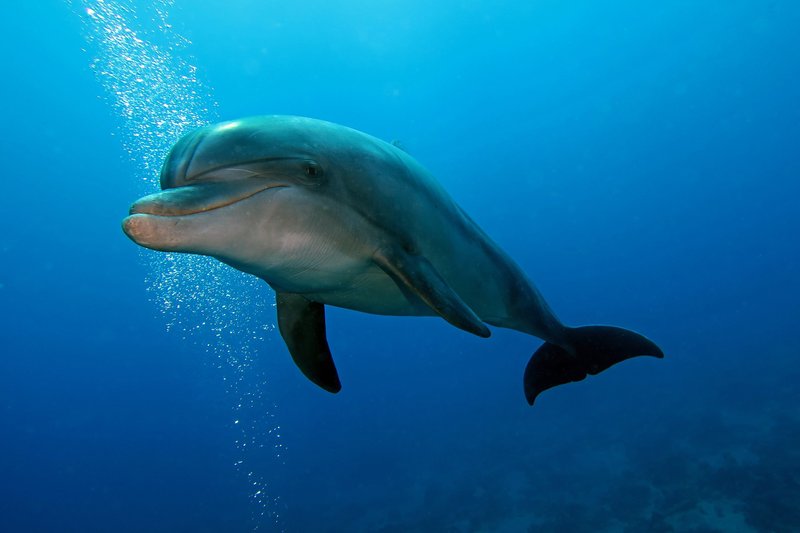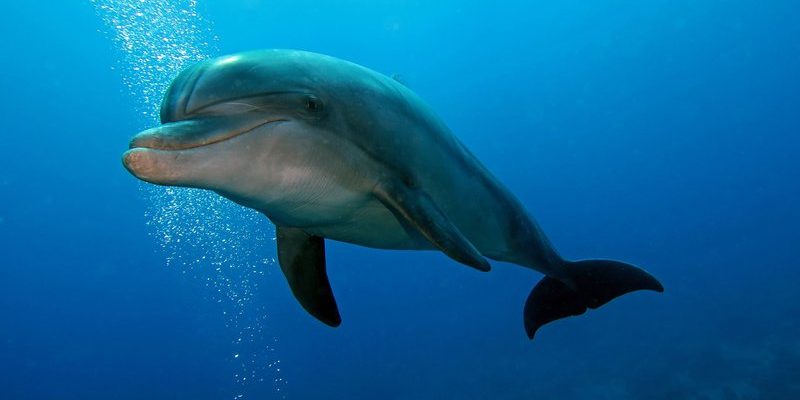
Now, let’s dive deeper into the world of the bottlenose dolphin. These mammals, known scientifically as *Tursiops truncatus*, are not just adorable but also fascinating in ways that might surprise you. From their social structures to their communication skills, here are ten incredible facts to appreciate about these wonderful sea creatures.
1. Highly Intelligent Creatures
Bottlenose dolphins have an impressive brain-to-body size ratio, which makes them one of the most intelligent marine mammals. In fact, their cognitive abilities are often compared to those of primates. They showcase problem-solving skills, exhibit complex social behaviors, and can even use tools! Isn’t that mind-blowing?
Here’s a fun example: these dolphins can use marine sponges to protect their snouts while foraging on the seafloor. This behavior demonstrates not only their intelligence but also their ability to adapt to different environments. You might be wondering how they compare to other animals in intelligence—studies show they can recognize themselves in mirrors, a sign of self-awareness, something very few species, including humans, can boast.
2. Social Animals with Unique Bonds
Dolphins are incredibly social creatures, often found living in pods of around 10 to 30 individuals. In some cases, these pods can be much larger! Each dolphin within a pod has its role, creating a strong sense of community. They communicate through whistles, clicks, and body language, forming unique bonds much like human friendships.
Imagine a group of friends always looking out for one another—that’s how dolphins interact. They often engage in playful behaviors, like surfing the waves or making synchronized leaps out of the water. This social interaction is crucial for their emotional well-being, making it clear that they thrive on companionship, much like we do.
3. Master Communicators
When it comes to communication, bottlenose dolphins are truly remarkable. They use a complex system of sounds and body gestures to convey messages, emotions, and even warnings. Each dolphin has a signature whistle, which functions much like a name. They can identify these whistles among other sounds in their environment, making it easier to locate each other in the vast ocean.
Moreover, their communication goes beyond simple noises. Dolphins can also display various body movements, such as leaping and spinning, to express excitement or playfulness. Here’s the thing: their ability to share information is crucial for hunting together and maintaining their pod dynamics.
4. Impressive Swimming Abilities
Bottlenose dolphins are built for speed and agility in the water. They can swim up to 25 miles per hour, which is impressive when you think about their size! Their streamlined bodies and powerful tails help them maneuver swiftly through the ocean, making them expert hunters.
What’s even more fascinating is their ability to dive deep. They can reach depths of over 1,000 feet while holding their breath for up to 15 minutes. This capability not only showcases their physical strength but also highlights their skill in hunting for food. They often dive together, using their echolocation skills to locate prey—another testament to their intelligence!
5. Playful Nature
If you ever get the chance to see a bottlenose dolphin in the wild, you’ll likely witness their playful behavior. These dolphins love to surf on waves, leap out of the water, and even play with objects like seaweed or shells. Think of them as the comedians of the ocean; their antics can be quite entertaining!
This playfulness serves a purpose, too. Engaging in play helps them build social bonds and develop their physical skills, which are essential for survival. Additionally, it allows them to explore their environment, which is vital for their well-being. So, when you see them jumping around, remember they’re not just having fun—they’re also learning and connecting with their friends.
6. Strong Parental Bonds
Bottlenose dolphins are dedicated parents, exhibiting strong maternal care. A mother typically gives birth to a single calf after a gestation period of about 12 months. The bond between a mother and her calf is incredibly strong, with the mother nursing her young for up to two years!
Here’s the thing: these calves aren’t just left to fend for themselves. Mothers often teach them essential survival skills, such as hunting and socializing within their pods. This nurturing behavior highlights the importance of family in the dolphin world and showcases their emotional depth.
7. A Diverse Diet
Bottlenose dolphins are opportunistic feeders, meaning they eat a variety of foods based on what’s available. Their diet primarily consists of fish, squid, and crustaceans. They often work together in pods to herd fish into tight groups, making it easier for them to catch their meal.
Imagine a team working together in a kitchen to whip up a delicious feast—this is similar to how dolphins collaborate. They may use echolocation to locate their prey and employ various hunting strategies to ensure everyone gets enough to eat. This teamwork not only ensures their survival but also strengthens their social bonds.
8. Vulnerable to Threats
Despite their adaptability and intelligence, bottlenose dolphins face several threats in the wild. Pollution, habitat loss, and fishing activities can significantly impact their populations. They are particularly susceptible to entanglement in fishing nets, which can lead to injuries or death.
Conservation efforts are vital to protect these incredible creatures. Marine sanctuaries and regulations on fishing practices help create a safer environment for bottlenose dolphins. Awareness and education about their challenges can lead to better protection and preservation of their habitats. You might be wondering how you can help—supporting ocean cleanup initiatives or advocating for sustainable fishing practices can make a difference.
9. Fascinating Communication Technology
While dolphins are remarkable communicators, researchers are working hard to decode their complex language. By using advanced technology, scientists study their vocalizations and body movements to better understand their conversations. The goal is to grasp not just what they say but also how they say it.
Could you imagine being able to converse with dolphins one day? Although we might be far from that, each small step brings us closer to understanding their social dynamics and behaviors. This research contributes to our knowledge of marine life and highlights the importance of respecting these intelligent beings.
10. Significant Cultural References
Bottlenose dolphins have left a significant mark on human culture, appearing in myths, folklore, and even movies. From ancient tales of dolphins as symbols of friendship to contemporary films showcasing their intelligence, these creatures have captivated our imaginations for centuries.
Their popularity is also seen in marine parks and aquariums, where they often perform breathtaking shows. However, it’s crucial to ensure that these settings prioritize the well-being of animals over entertainment. Advocating for ethical treatment and respectful interactions with dolphins is essential to maintaining their dignity and natural behaviors.
In conclusion, bottlenose dolphins are not just playful and charming; they are complex and intelligent beings deserving of our admiration and protection. Understanding these top 10 fascinating facts can deepen our connection to them and encourage us to promote their conservation. So, the next time you see a dolphin, whether in the ocean or on a screen, remember the incredible life it leads beneath the waves.

